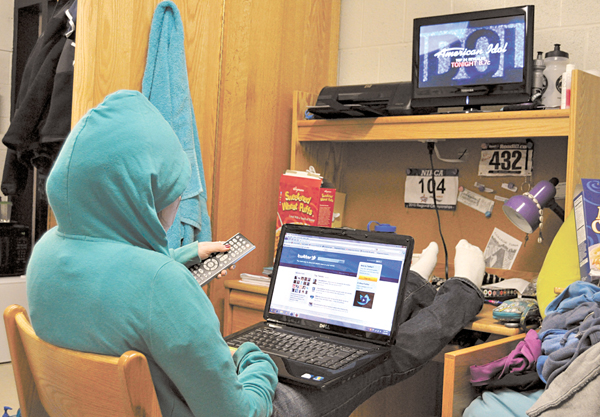
What started as a social networking device is quickly becoming one of the most powerful business tools to date. It’s hard not to overlook how Twitter is changing the way in which we interact with friends, consume information and even watch television shows and live broadcasted events.
For all of you non-Tweeters out there, Twitter is an information network where each user gets to express their thoughts in a message (referred to as a Tweet in the cyber universe) limited to 140 characters at a time. You can also participate in trending topics and be on the same page as thousands of other Tweeters out there.
Two weeks ago, Twitter’s CEO, Dick Costolo, gave a keynote address at Mobile World Congress in Barcelona in which he pitched the site as a powerful weapon for businesses.
“Twitter has become a ‘second screen’ alongside television, making major social events out of live TV, programmed broadcasts and even commercials,” Costolo said. “TV shows become events, meaning people watch them as they happen. We’re so used to creating experiences for our users, but now our users are creating experiences for each other.”
When Fox airs the show “Glee,” Twitter traffic jumps by a factor of 30 and holds that number for the whole hour the show is on, according to www.CNNMoney.com. This year’s Super Bowl broadcast had Twitter users shooting out 4,000 tweets per second.
Valerie Piazza, a junior majoring in industrial and systems engineering, is an avid tweeter during shows like “Glee.”
“I follow different celebrities and TV stations [on Twitter], so if they tweet about a new show or a new guest star I will turn on the TV to check it out,” Piazza said.
Professor Palmer Agnew, adjunct lecturer of computer science at Binghamton University, attributes Twitter’s increased popularity during live televised events and televised programming as an expression of our emotions.
“It is simply a basic human desire to socialize pleasant experiences easily with remote people,” Agnew said.
The most recent live-broadcasted show to gain a huge audience boost and soar in the Nielsen ratings thanks to Twitter was the live broadcast of The 53rd Annual Grammy Awards. This year’s Grammy ratings hit a high note this decade that had yet to be seen for the awards show. Beating out all other networks, the CBS airing of the Grammys scored 26.6 million viewers, up 680,000 from last year’s broadcast.
Twitter is taking most of the credit, and they should too. Piazza was a part of the Twitter flurry that evening.
“I watched the Grammys this year, as well as some other awards shows, while following Twitter the entire time,” Piazza said. “I was on the lookout for other people’s responses and even to just voice my own thoughts.”
Since Twitter is used in real-time, it only makes sense to pair it with live broadcasts or television shows as they are airing. People get to express their views on whatever is going on and possibly catch someone else’s interest.
You may not have been watching the Grammys two Sundays ago, but if you were following Twitter and read a tweet about Cee-Lo Green performing with muppets and decorated in a feather get-up adorned with ancient Roman warrior armor, you might have been prompted to turn on the telecast and form your own opinion of the performance.
Aubrey Bertin, a senior pursuing his MBA with a concentration in finance, expressed how he felt about the end result of the awards shows in a sarcastic tweet.
“Oh Lady Antebellum won a bunch of Grammys, maybe I should like their music. #fatchance #ihatethatsong,” Bertin said.


